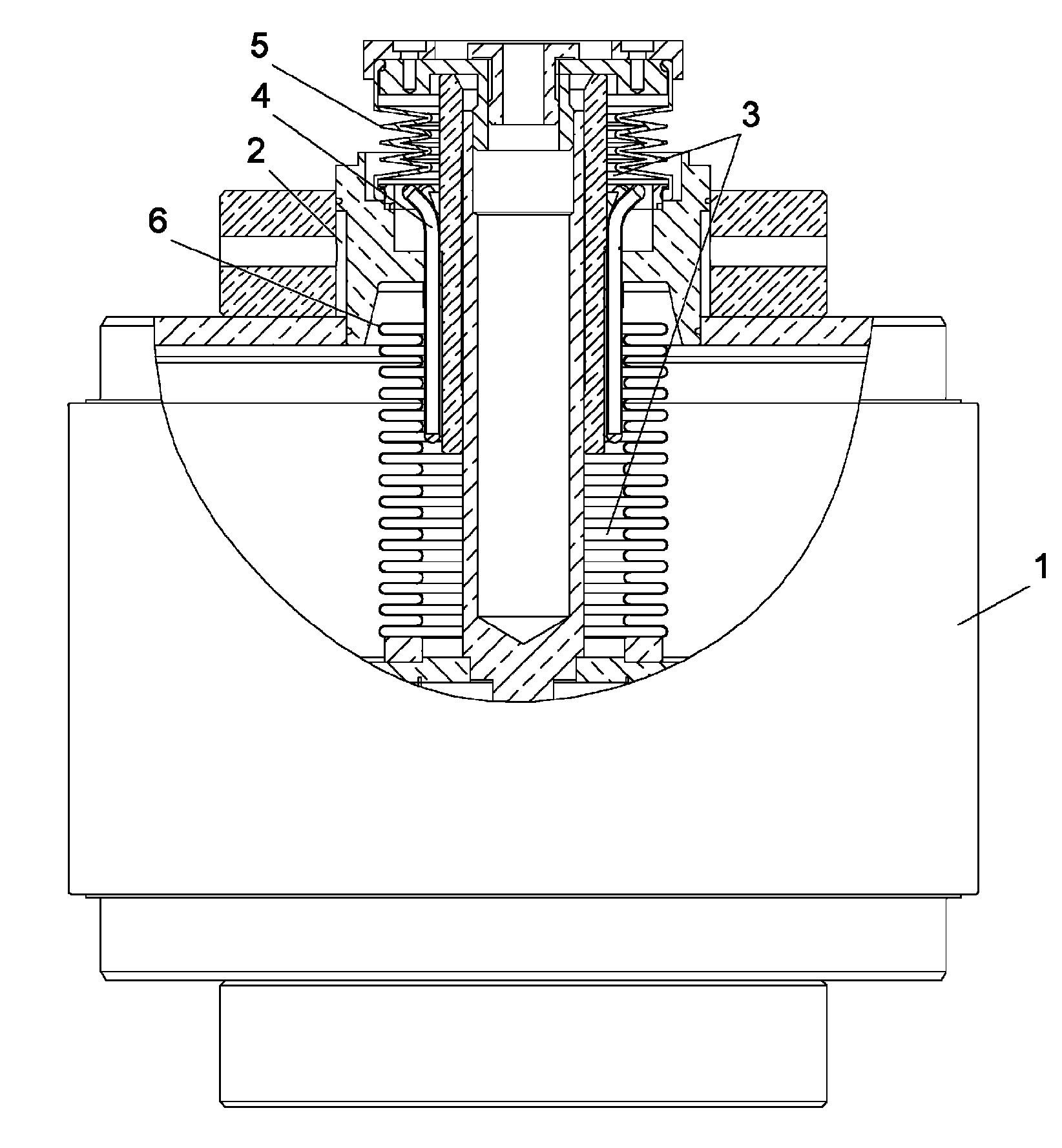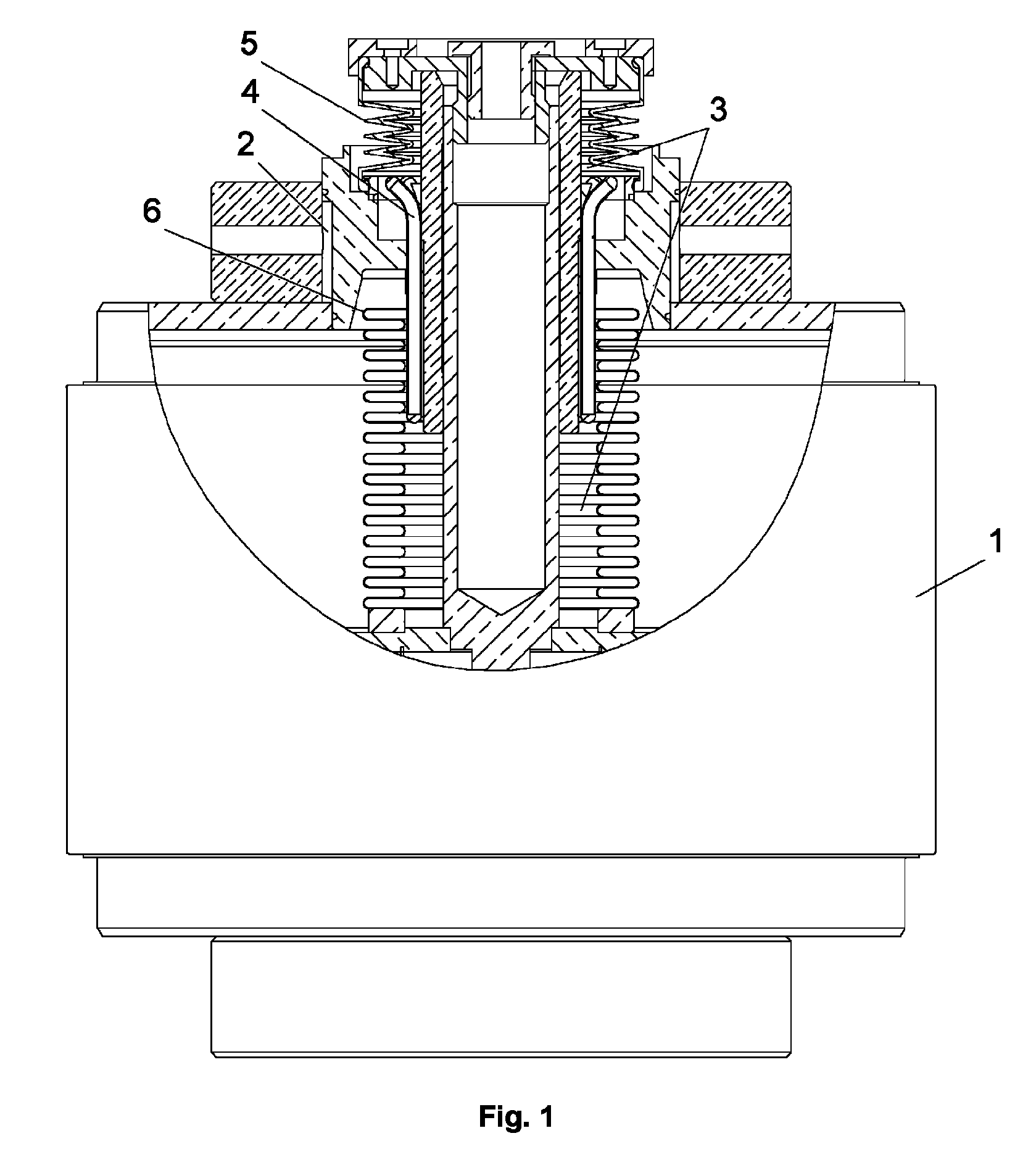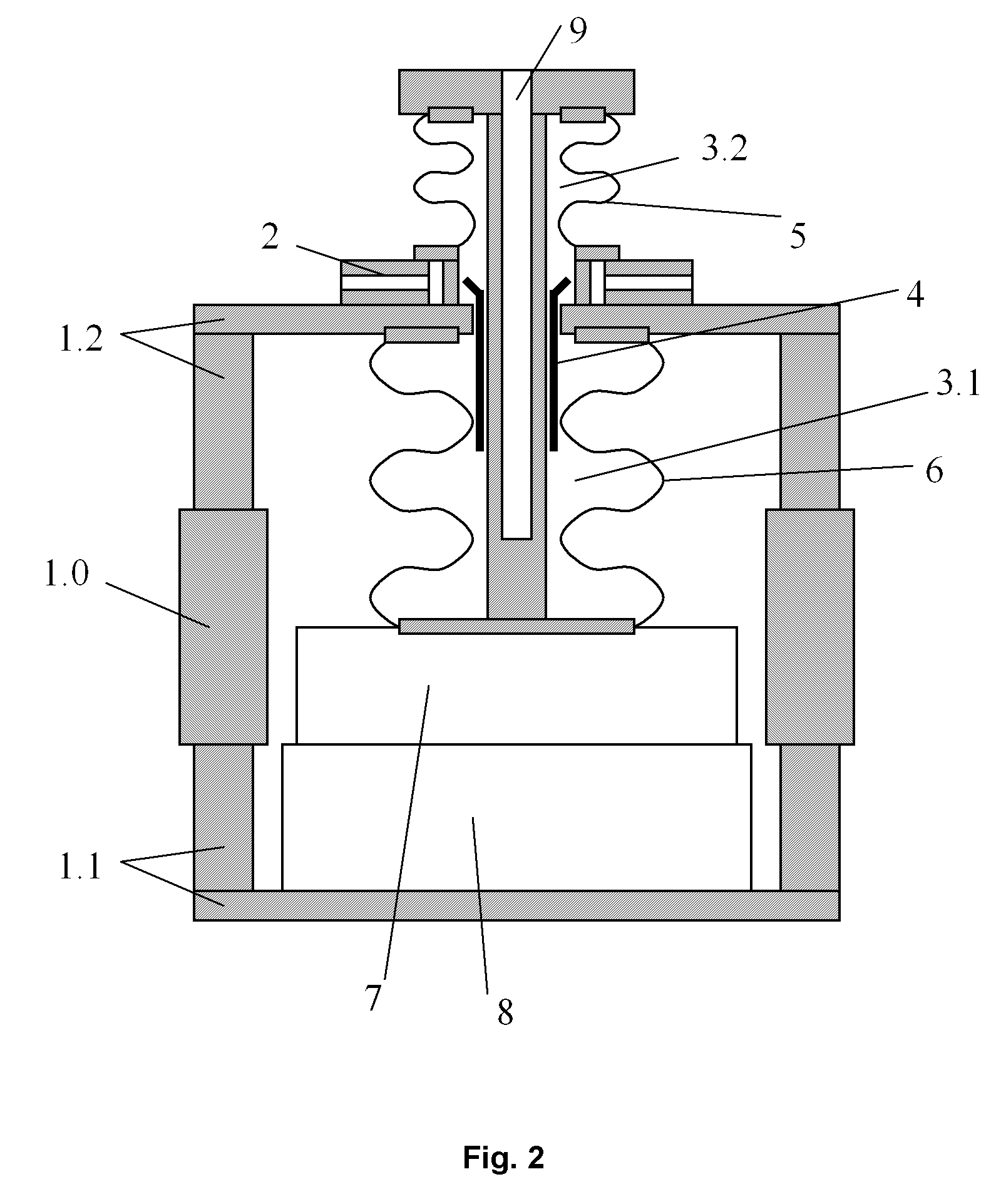Cooling system for a variable vacuum capacitor
a vacuum capacitor and cooling system technology, applied in the direction of variable capacitors, lighting and heating apparatus, electrical apparatus construction details, etc., can solve the problems of excessive heat energy produced in the metal bellows, distilled or de-ionized water must be used, and the requirement is difficult to achieve, so as to achieve good heat energy absorption and heat energy dissipation
- Summary
- Abstract
- Description
- Claims
- Application Information
AI Technical Summary
Benefits of technology
Problems solved by technology
Method used
Image
Examples
Embodiment Construction
[0015]In FIG. 1, the reference numeral 1 refers to a variable vacuum capacitor. In particular, the variable vacuum capacitor comprises two electrodes which are electrically separated by means of an insulator and which are arranged inside a vacuum. In FIG. 1, the electrodes are not shown. In FIG. 1, a cooling system for a variable vacuum capacitor 1 is shown. In FIG. 1, the reference numeral 2 refers to a cooling circuit. The cooling circuit 2 is arranged outside the variable vacuum capacitor 1. The cooling circuit 2 may be a high pressure cooling circuit. The cooling circuit 2 may be designed to transport heat energy away from the outside of the variable vacuum capacitor. The transport of heat energy may be enforced by means of a suitable transportation of water. However, any other means for transporting heat energy away from the outside of the variable vacuum capacitor may be used. Such other means may comprise, for example, several laminations arranged on the surface of the variab...
PUM
 Login to View More
Login to View More Abstract
Description
Claims
Application Information
 Login to View More
Login to View More - R&D
- Intellectual Property
- Life Sciences
- Materials
- Tech Scout
- Unparalleled Data Quality
- Higher Quality Content
- 60% Fewer Hallucinations
Browse by: Latest US Patents, China's latest patents, Technical Efficacy Thesaurus, Application Domain, Technology Topic, Popular Technical Reports.
© 2025 PatSnap. All rights reserved.Legal|Privacy policy|Modern Slavery Act Transparency Statement|Sitemap|About US| Contact US: help@patsnap.com



